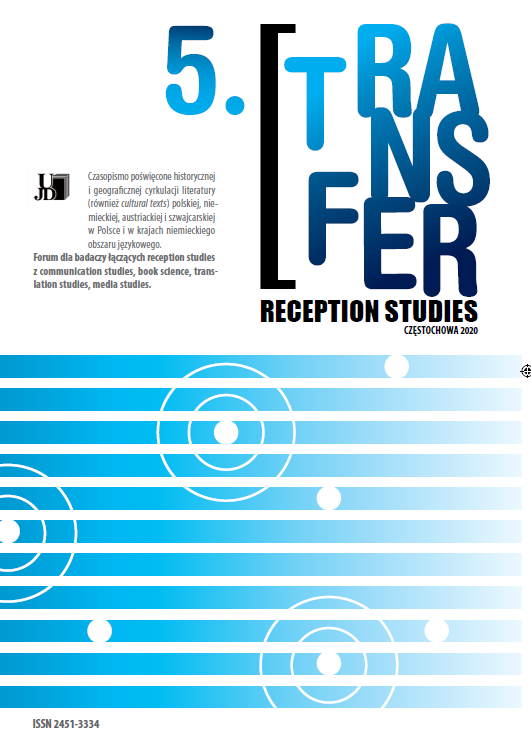Gorzkie łzy nieznośnych dzieci w wersji polskiej, czyli o motywie płaczu w tłumaczeniach zbiorku Struwwelpeter Heinricha Hoffmanna
The bitter tears of unbearable children in the Polish version or the crying theme in the translations of Heinrich Hoffmann’s Struwwelpeter
Author(s): Joanna Frużyńska Subject(s): Language and Literature Studies, Studies of Literature, German Literature, Translation Studies
Published by: Uniwersytet Jana Długosza w Częstochowie
Keywords: Struwwelpeter; Złota różdżka; translation; adaptation; reading for pleasure; didacticism; empathy
Summary/Abstract: The paper makes a comparative analysis on the theme of tears in three Polish translations of Heinrich Hoffmann’s Struwwelpeter. The aim is to interpret the collected data (words related to the theme of tears appear significantly more often in all translations than in the original) and to compare them with the strategies of Polish translators described in earlier research, especially in the studies of Joanna Dybiec-Gajer. The choices made by trans-lators in the field of lexis and syntax, as well as the applied amplifications and transformations, indicate a close connection of the contexts in which the theme of tears appears with the general features of the translation / adaptation, in particular with the tendency to emphasize the didactic function or to encourage reading for pleasure. While, on the other hand, there is an indication the choices made deal with projected reactions of the child reader’s fear, through empathy to non-serious reading. The article also presents briefly the history of Struwwelpeter’s publications in Poland in the 160 years since the first, anonymous edition of the book entitled Złota różdżka, as well as the most important threads of Polish research on the work. The interpretations of Struwwelpeter and Złota różdżka that have appeared in Polish sources and literary criticism are also mentioned as well as the problem of identifying the Polish translation (which is in fact an adaptation) with the original.
Journal: Transfer. Reception studies
- Issue Year: 5/2020
- Issue No: 1
- Page Range: 255-279
- Page Count: 25
- Language: Polish

